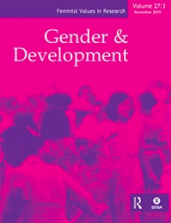Mainstreaming gender in the WASH sector: dilution or distillation?

Overview
The way women’s issues have been conceptualised and acted on in the context of water, sanitation, and hygiene (WASH) has changed over the past four decades. The discourses and trends in development studies – from the Women in Development approach of the 1970s to Gender and Development in the 1980s – were mirrored in the WASH sector. The WASH sector has contributed to, and been shaped by, debates on women’s needs and, latterly, on gender perspectives based on a combined argument for equity and efficiency. In addition, in the last decade, the WASH sector has developed its own distinctive initiatives, such as menstrual hygiene management and, recently, specific WASH considerations relating to gender-based violence. This paper assesses whether the result of this sector-specific response has been a dilution or distillation of gender issues. It concludes that the WASH sector has not disregarded the goals of women’s empowerment and gender equality; rather, it has contributed to understandings of how resources – such as infrastructure and services – underpin that empowerment. This allows an important recognition of the value and impact of WASHsector priorities and actions for the wider well-being of women.
This article is hosted by our co-publisher Taylor & Francis. For the full table of contents for this and previous issues of this journal, please visit the Gender and Development website.
Keywords
Additional details
Author(s)
How to cite this resource
Citation styles vary so we recommend you check what is appropriate for your context. You may choose to cite Oxfam resources as follows:
Author(s)/Editor(s). (Year of publication). Title and sub-title. Place of publication: name of publisher. DOI (where available). URL
Our FAQs page has some examples of this approach.
Oxfam in Gender Emergencies Standards 2022-25

Oxfam Gender in Emergencies Strategy 2022-25


